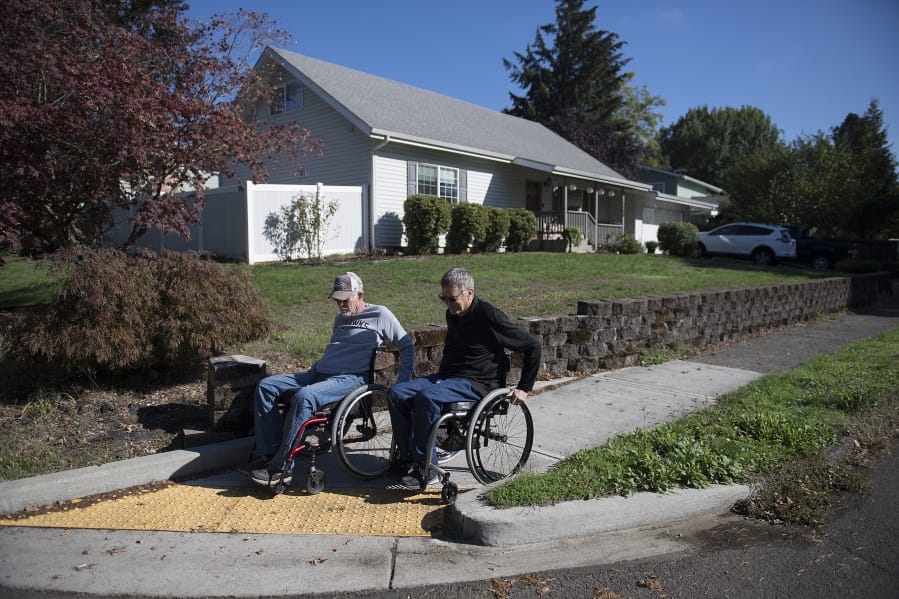Over Robert Klug’s 18-year career with Clark County, he’s seen a change in how staff approach the Americans with Disabilities Act. It’s gone from simply fulfilling a requirement to understanding more needs to be done and having a passion to see that work through.
“I want to live long enough to benefit from the things we do,” said Klug, a traffic engineer with Public Works.
Some upgrades made to increase mobility for everyone may not be fully recognized by those who aren’t disabled. In 2014, for instance, the county began installing accessible pedestrian buttons at 101 traffic signals. Aside from looking shiny and new, these buttons are designed to be activated with the lowest pressure possible or by using a stylus on a pen. And then, the signal will audibly say when the walk signal is on. It’s a technology accommodating several types of disabilities, from someone who’s blind to someone with low muscle mass.
One of Klug’s main tasks is curb ramps, the graded area between sidewalks and the street. Curb ramps cost on average $10,000 to replace; the county replaces 150 each year, spending $1.5 million annually.
Klug said the county picks the worst ones in the areas with the highest pedestrian needs. Each ramp may have specific needs, such as property or tree removal or sidewalk widening. Designs have evolved over time. Back in the day, designs included a lip on the ramp to keep water from going up the ramp. That’s now considered a bad design; the lip impedes wheelchairs.
Ahmad Qayoumi, director of Public Works, said there’s a lot of trial and error figuring out what works. New regulations don’t always come with new standards to follow. Curb ramps need to be designed not just for people in wheelchairs, but also for those who are visually impaired and may have trouble seeing the transition between the sidewalk and road. It’s a complex piece of concrete. And, fine details — why a 2 percent slope is easier to maneuver than 4 percent — become important, Qayoumi said.
A yellow pad with domes on it helps a blind person understand there’s a change and that they’re entering a roadway. These details are more important for some users than others. The challenging and amazing part of the ADA, Klug said, is that it mandates equal access for everyone. So, traffic engineers can’t think of one group or type of disability.
The county is developing a refined ADA transition plan that would identify high-needs ramps and routes. For instance, someone may take the bus, but the route from their home to the nearest bus stop isn’t maneuverable, making the accessibility of the bus stop itself a moot point.
Qayoumi said the county is looking at both sidewalks with defects and areas that are entirely missing sidewalks, such as Northeast 72nd Avenue. Ramps that are somewhat usable are lower on the county’s priority list. Klug said the county is gathering data on 10,000 ramps in the county.
“With something as important as the ADA, we have to get it right,” he said.
The COVID-19 pandemic shifted the schedule for completing the transition plan. Eventually, community members and the county council will be able to participate in the plan through workshops and open houses.
Retrofitting existing infrastructure is important work, but the needs are higher than available funding, Qayoumi said, which makes fully complying with the ADA an unfunded mandate.
The good news, Klug said, “When we build new we can build it right.”
It’s about designing things in a way that benefits everyone. An accessible sidewalk doesn’t just benefit someone who’s disabled but also parents pushing strollers or kids in-line skating or someone pulling a shopping cart. Klug said people want choices for how to move about their neighborhoods and communities other than driving a car.
“It’s kind of a wholesale shift in perspective.”





